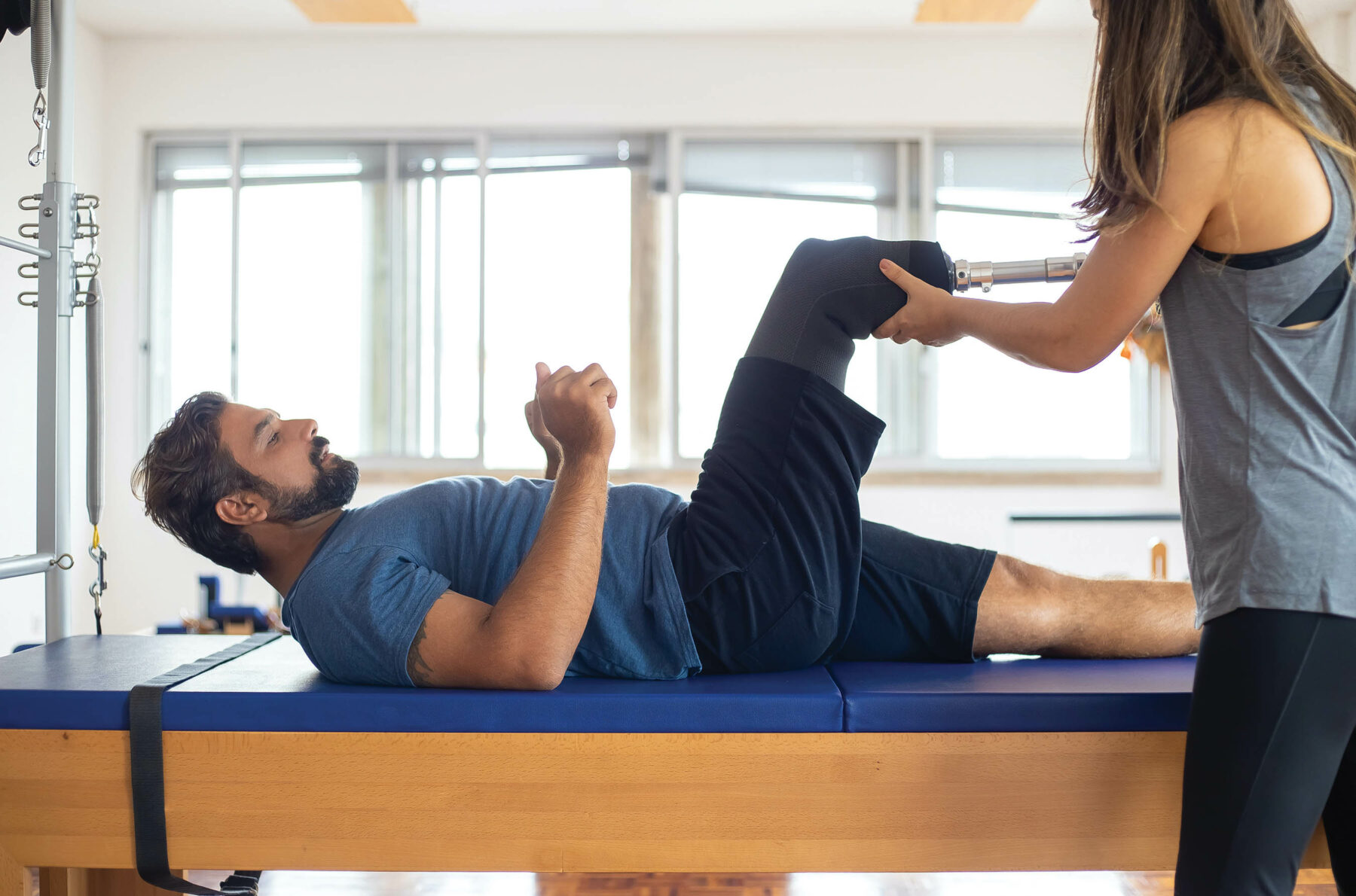Here’s How Local PTs Treat Their Patients

You’ve probably heard the saying, “There’s more than one way to skin a cat.” That holds true for physical therapy. If you have “tight muscles,” you should stretch, right? That’s generally true, but what type of stretching is best? Or maybe you don’t need stretching and it’s actually just a weakness. Even something as simple as “muscle tightness” is incredibly nuanced, and your therapist’s job is to decide which intervention is best.
Every patient, diagnosis and physical therapist is unique. After graduation, physical therapists can learn different treatment philosophies, techniques and skills. There are countless continuing education courses offered to improve their knowledge and skill set. PTs think of these courses as tools that allow them to tweak and dial in the plan of care to each patient’s needs. But how does a therapist decide the best approach?
I talked with some local PTs about their approaches and treatments:
What’s your general approach to treatment?

Photo courtesy of Jon Hupp
Jon Hupp, PT, MTC, Cert MDT, PRC — STAR Physical Therapy: “I have an eclectic approach to treating patients, but the foundation of our treatment is based on the science and research of the Postural Restoration Institute® (PRI).”
Nick DiSarro, PT, DPT, OCS, CEAS — ResilientRx: “I don’t follow one approach or proprietary system. Although, in my training over the years, I’ve utilized systems like Graston Technique and Selective Functional Movement Assessment. My personal style, like many physical therapists, is a combination of manual therapy and exercise. Aside from the clinical stuff, I feel building relationships and rapport with my clients is crucial.”

Photo courtesy of Nick DiSarro
Nishal Patel, PT, DPT — The Movement Clinic: “Physical therapy should be simple. You don’t need all the fancy gadgets and knickknacks to make people feel good. For me, physical therapy is a lifestyle. It’s not something you have done to yourself. Physical therapy extends beyond the doors of our clinic. It’s holistic and all-encompassing.”
Mark Denesha, PT, DPT — Forever Forward Physical Therapy: “A strong body is a more resilient body, and exercise is the closest thing we have to a panacea. As a collegiate athlete and military veteran, basic training taught me to appreciate the importance of physical fitness. Exercise needs to be dosed properly, and with the optimal amount of appropriate movements, your physical and mental health will thrive.”

Photo courtesy of Nishal Patel
What unique treatments do you utilize regularly?
Hupp: “PRI-credentialed therapists recognize the more common integrated imbalances and patterns of overuse/disuse or weaknesses. The human body is not symmetrical. Although we have two arms and two legs, internally, we are asymmetrical. An example is although we have two lungs, our left one has two lobes and the right has three. We prescribe exercises and manual techniques that integrate proper respiration with the left side or right side by inhibiting or facilitating specific muscles.”
DiSarro: “I wouldn’t say it’s unique, but I’m partial to strength training. It has a place to some degree in everyone’s lives. It doesn’t have to be complicated or super intense to have numerous health benefits and positive effects on pain and longevity. Not only has it been shown to be a pain reducer, but it’s the ultimate confidence builder!”

Photo courtesy of Mark Denesha
Patel: “When it comes to muscle and joint pain, for the most part, it’s an issue of load capacity. Do your muscles, ligaments and tendons have the ability to handle the load or activity that you want to perform? If not, sometimes you’ll get pain. If you get stronger, understand how to live a balanced lifestyle and laugh every once in a while, and you’ll be just fine.”
Denesha: “I’ve found that oftentimes patients benefit from novel stimuli. This may be introducing a new movement pattern, manual technique or even modality such as dry needling. I’ve seen great results with dry needling and, in a number of cases, it has only required one or two treatments to get significant improvement.”
So, what’s the best treatment? It depends. One study showed that when patients had confidence in the treatment, it resulted in higher benefits in low-back pain. When you’re looking for a physical therapist, make sure it’s someone you have confidence in and you can trust that they’re doing the best they can to help you reach your goals.
About the Author

Mark Denesha, PT, DPT is the owner of Forever Forward Physical Therapy — an Austin-based fully equipped mobile PT clinic. FFPT services include manual therapy, strength training and injury recovery, when and where you need it. Denesha’s collegiate sports and military background, combined with his curiosity for movement, have influenced his treatment style, which prioritizes strength and function.






